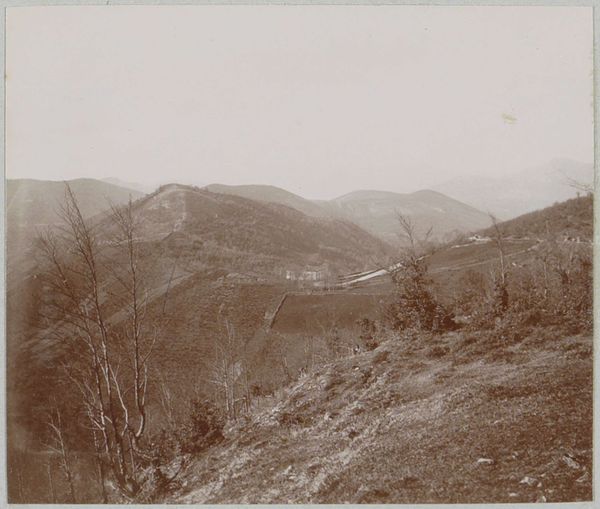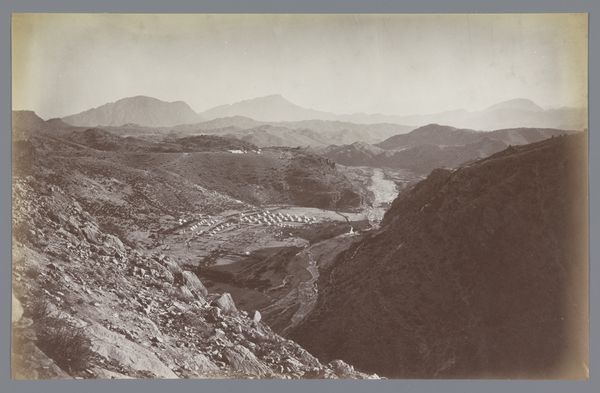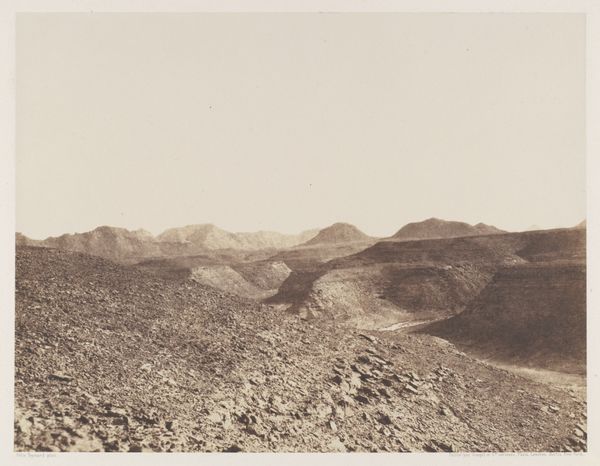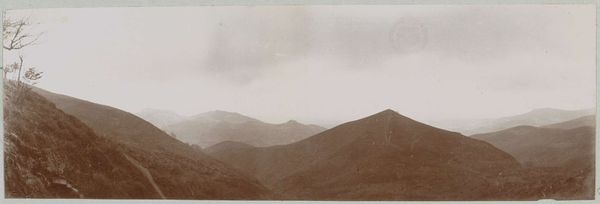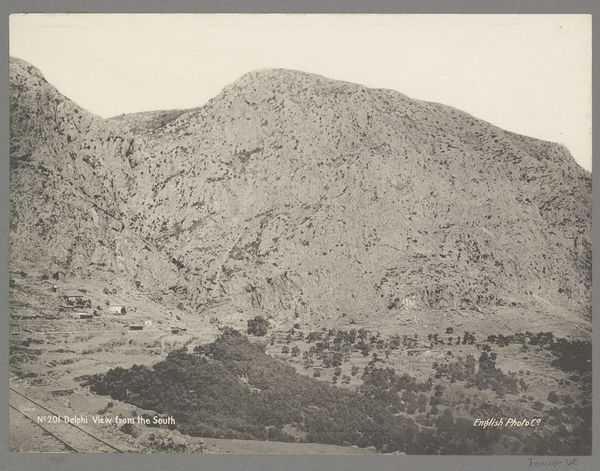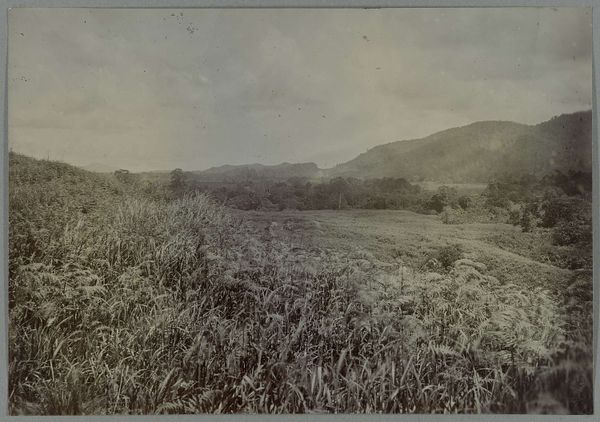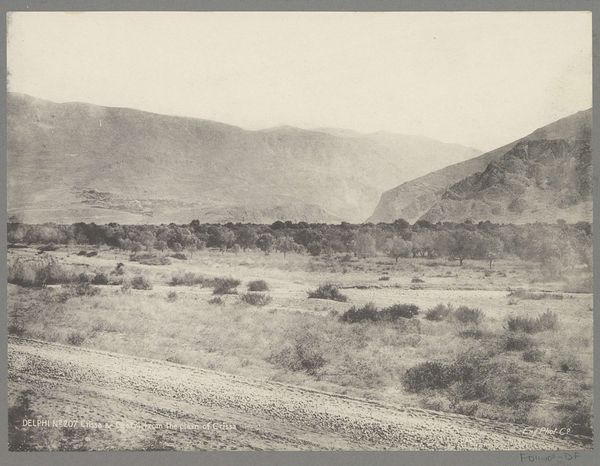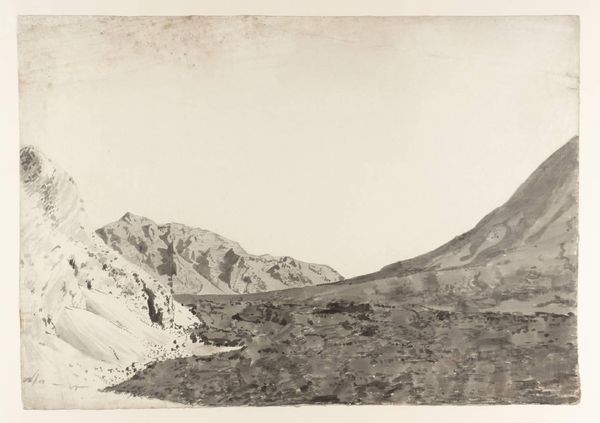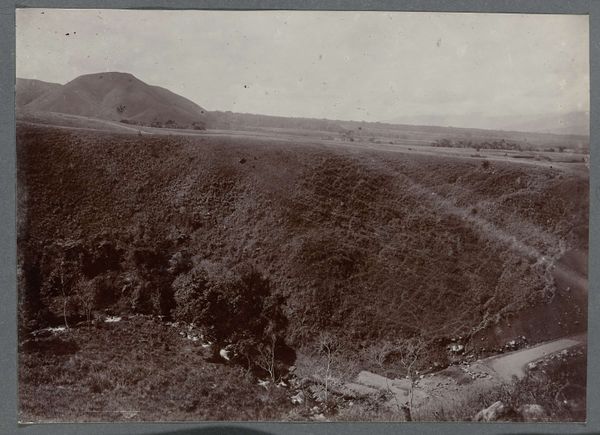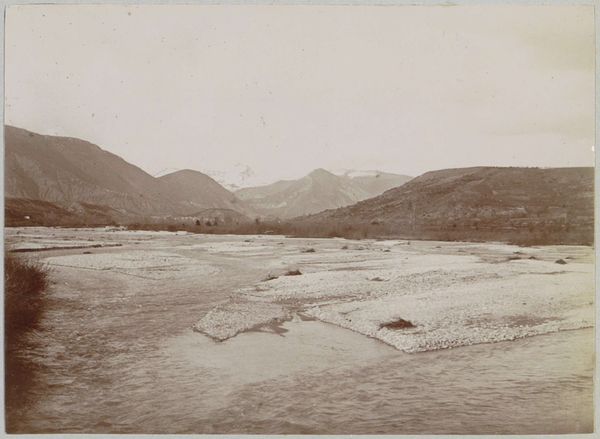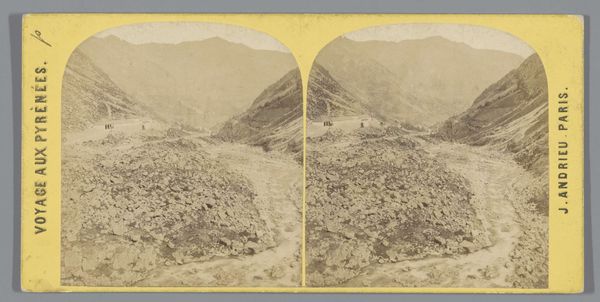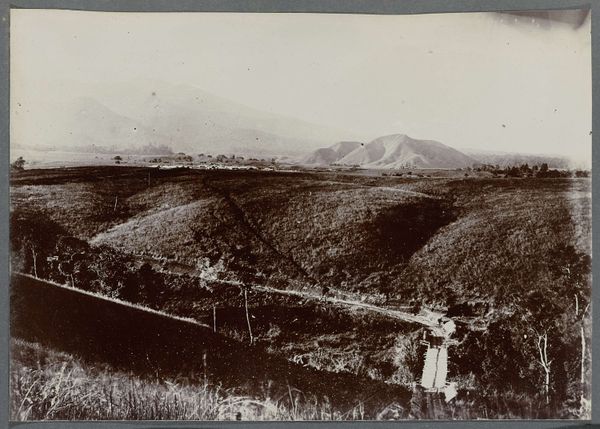
photography
#
landscape
#
photography
#
orientalism
#
realism
Dimensions: height 138 mm, width 200 mm
Copyright: Rijks Museum: Open Domain
Curator: Looking at this image, titled "Aanleg van de weg door open terrein" or "Construction of the Road Through Open Terrain", created sometime between 1903 and 1913, what springs to mind for you? Editor: An overwhelming sense of melancholic peace. There’s a faded quality to the image, like a forgotten dream or a memory seen through fog. The sprawling landscape feels both vast and claustrophobic with the high grass, you know? Curator: Absolutely. As a photograph depicting road construction, it reflects broader socio-economic realities, pointing to the transformation of the landscape through labor. This raises a question: Who exactly is constructing the road? What are their lives like? What tools are being used? It asks us to consider the process of infrastructural development itself. Editor: That’s a really powerful way of framing it. I initially felt the artistic side pulling at me - a simple landscape captured through a unique monochromatic lens of the past, but that point about labor puts the work, to borrow your phrase, into material development terms. It reframes everything. Now I see less serene picture and more back-breaking exertion under an indifferent sky. Curator: Exactly. We might ask what kinds of bodies are used for construction. The presence or absence of machinery hints at both a timeline and a certain kind of economic structure. Editor: It strikes me as the complete opposite of those idealized landscape paintings we're so used to, not in a pastoral paradise kind of way, because it focuses squarely on labor and exploitation, where man impacts upon an indifferent nature and not vice versa. I suppose what I felt to be peace, at the start, may actually reflect an imposition. It almost casts this scene as less ‘the land giving’, but as, ‘the land being forcefully taken’. Curator: An imposition with a social consequence. Thinking about that road itself: Who is it for? What commodities, resources, or people are expected to travel on it, and who benefits? It provides, perhaps, a visual representation of power. Editor: Yes, exactly. I think the very deliberate way that road has been designed also illustrates progress in a tangible and visual way, from the past into what was understood as being, "the future". Which gives us the power now to look back, question its implications and to be reflective of where this work comes from.
Comments
No comments
Be the first to comment and join the conversation on the ultimate creative platform.
